Update! The Faraday Porteur and Cortland moved from $3,799 to $3,499 in 2017 and the review listing price here has been updated to reflect that.
The Faraday Porteur is one of the smoothest, quietest, most beautiful electric bikes I’ve ever tested. Rather than relying on a greasy chain, cassette and derailleur it opts for a clean carbon belt drive and internally geared hub. Instead of opting for a heavier high powered motor and oversized external battery pack it features integrated cells (right in the downtube) and a medium power motor to keep overall weight down while focusing on balance and efficiency. It’s available in three sizes and while they all utilize the high-step double top tube frame design, my 5’4″ Mom was able to mount the medium and felt very comfortable riding it around the neighborhood. The frame is exceedingly comfortable thanks to its chromoly steel (vibration dampening) material, swept back porteur style handlebars and medium-sized hybrid tires. Complimenting the frame and mechanical drivetrain is an intuitive, though minimalist, electronics setup that’s so easy to operate you could literally turn the bike on and change power levels with your eyes closed. While the display readouts are minimal (an E-Ink indicator shows battery voltage) every Faraday Porteur is Bluetooth enabled for use with a smart phone app due in early 2015.
Driving the Porteur is a modest, though upgraded SYX, 250 watt geared motor from 8Fun. It’s located in the front wheel in order to accommodate an 8 speed internally geared Shimano Alfine hub in the rear. This spreads out weight on the bike and creates a symmetrical appearance. While I am aware of some hubs that combine pedaling gears with a motor system (BionX built one for the Smart eBike) the ones I’ve seen only offer 3 speeds which can be limiting for some hill climbing or higher speed applications. While I usually prefer a rear mounted motor for improved traction, frame strength and decreased impact on steering, I’m a fan of what Faraday has done here. The motor is mounted to a steel fork for improved strength, it offers great traction for use with the optional front Porteur rack and is light enough that steering feels normal. While 250 watts is at the lower end of the power spectrum for ebikes in the US, it’s standard in Europe and the geared design provides excellent torque for starting and climbing. Since the motor is activated through a bottom bracket torque sensor, you have to pedal in order to make the bike go and the lower gears provide a lot of leverage for battling wind, carrying extra weight or climbing. I’ve actually tested earlier prototype versions of this ebike on hills in San Francisco and was pleased with the performance. Note that the top motor speed here is 20 miles per hour but you can pedal faster in high gears without experiencing drag thanks to the freewheel design.
The battery pack used for the Faraday Porteur has evolved since its inception on Kickstarter in 2012. Originally, the two iconic top tubes were filled with battery cells. On the final production version (being reviewed here) the batteries have migrated down to the downtube which keeps weight lower and helps the bike to feel even more balanced. The benefits of any in-tube battery design are improved aesthetics and stealth but one downside here is that the battery is not easily removable for charging. You basically have to park your bike near a power outlet to charge it… but Faraday does provide two chargers for convenience (one for home and one for work) and the bike is so light at 39 to 40 pounds that carrying it across a threshold or up stairs is less daunting that most other electric bicycles. The cells inside the downtube are made by Panasonic which is one of the highest end producers in the space. They are composed of Lithium-ion which are known for being light weight and long lasting (1,000+ full charge cycles). The pack delivers 43 volts of power and 5.8 amp hours of capacity for a modest 250 watt hours of capacity. I like that they focused on increased voltage (for improved power and climbing) here and am happy with the 20 to 25 mile range. charge time is ~3 hours from empty but in just one hour you can get a majority of the pack filled. Again, the trade off here is light weight clean aesthetic for lower power decreased range and its one of the few ebikes I’ve tested that’s actually fun to ride when powered off.
Operating the electric drive systems on this bike is super simple… Once you’ve plugged it in for the allotted 3 hours just press the polished aluminum power button on the control panel at the back of the top tubes for about two seconds. The button lights up with a blue ring and both the front and rear LED lights activate (they run at all times for improved safety and to reduce interface clutter on the bike). From here you can mount the bike and begin using the plastic switch slider on the left handle bar. It’s easy to reach without taking your hand off the grip and only has three modes (off, standard and boost) that you can actually feel “click”. You really don’t need to look down at all when riding this ebike and that makes it feel more like a regular bicycle. Aside from the special E-Ink battery capacity readout (also part of the switch slider) there’s no readouts for speed, distance or time. The Faraday approach to design reminds me of Apple products because it’s beautiful, simple, small and light but full of surprises… For example, the bike automatically shuts off after 10 minutes of inactivity to save the battery, and when the battery does run low the system automatically shuts off the motor but saves some juice to keep the lights going! All Porteurs ship with Bluetooth and will work with the upcoming smart phone app if you want extra information about speed, distance etc. The only thing I would have liked to see here (regarding the smart phone app) is a usb power port for charging since Bluetooth, GPS and screen backlighting all drain mobile devices more quickly.
The Faraday Porteur honors vintage frame styling and colors, packs in several optional accessories to add utility (front rack, rear rack and pouch) and leverages tried and true electronic systems to offer the best around-town ride I’ve ever experienced on an electric bike. It’s not perfect for every application and trade offs have been made between performance, balance, price and beauty but they accomplish something remarkable. This is almost a piece of art, it’s a machine that men and women of all ages seem to gravitate towards even before discovering that it’s electric. It rides efficiently and quietly but is very capable with top end components and structural design elements that converge naturally. With an excellent two year warranty, free shipping and a 30 day return policy plus paid assembly at a local shop (so you know it’s setup right) the Porteur is a winner that’s easy to recommend even if you can’t try it out in person first. The founder, Adam Volmer, is a former IDEO employee who set out to create something special and has worked ceaselessly since mid 2012 to build a team and reach the market with the Porteur and it truly stands apart.
Pros:
- Extremely balanced and light weight frame design at ~40 pounds, batteries are located in the downtube which is low and center on the frame, the front hub motor and rear geared hub balance perfectly
- Gates carbon belt drive is quiet, clean (requiring no grease) and stable thanks to the upgraded center-track CDX design
- Torque sensing bottom bracket offers smooth and responsive power activation, the bike does not feel jerky when the motor kicks in
- Eight speed Shimano Alfine internally geared hub offers enough range to conquer steep hills (and the motor performs quite well when climbing) as well as reaching higher speeds and gears can be changed at standstill, the internal design stays cleaner and rides quieter than a traditional cassette
- Avid BB7 mechanical disc brakes provide good stopping power, stay clean and look nice on the frame (nearly hiding the geared hub and motor from the side)
- One of the easiest electric bikes to operate that I’ve tested, intuitive power switch at the rear and tactile drive mode selector for off / standard / boost
- Front and rear LED lights are sturdy, bright and efficient with the front light able to mount at the stem or below the porteur rack
- The Faraday Porteur automatically shuts down after 10 minutes of disuse and as the battery gets close to empty the motor deactivates to save energy to keep the lights going for safety
- Excellent ergonomics thanks to multiple size options (the one in the review is a medium), vibration dampening chromoly steel frame and fork and swept back porteur style handlebars
- Full length bamboo fenders match the optional front and rear racks and provide surprisingly good splash coverage, watch the puddle test in this video
- Solid two year warranty on frame, drive systems and electronics with free shipping and paid assembly at a local shop plus a 30 day return policy (with $200 restocking fee)
- Beautifully integrated wires (are also modular for easy repair) matching saddle and grips, vintage style aluminum alloy pedals
Cons:
- While there are lots of great accessories available (rear rack, porteur rack, leather pouch) they cost extra and that adds up
- No water bottle cage bosses on the downtube (since battery cells are inside) or the seat tube (since the space is limited on the smaller frame) though I’ve been told they may produce a clamp on bottle holder for the downtube at some point
- Limited availability in stores, this makes test riding and sizing the Porteur more difficult though Faraday does offer a 30 day return policy with a $200 restocking fee
- Though the batteries are technically removable for replacement or service, they are meant to stay put in the downtube which means you have to bring the bike inside or near an outlet to charge it
- No backlit LCD display panel to communicate your speed or odometer however the e-ink display does show battery voltage and the three-position switch is intuitive, also Faraday is releasing a bluetooth enabled smart phone app in early 2015 for more advanced readouts but there is no USB charging port to keep your phone charged when using the app
- Brake levers do not feature an integrated cut-off switch to the motor, this means that if you activate the brakes but keep pedaling the motor will continue driving forward, this is less of a concern with torque sensing pedal assist than cadence-only sensing and with a smaller motor such as the 250 watt used here
- Originally these bikes were going to be built in the United States with steel frames being produced in Portland Oregon, they are now produced overseas but the design and assembly are still done domestically
- Limited side visibility for rear light, no flashing or blinking modes to choose from only steady-on
Resources:
- Official Site: http://www.faradaybikes.com/
- More Pictures: https://goo.gl/photos/H28xLxVWgPeCF5Gt6


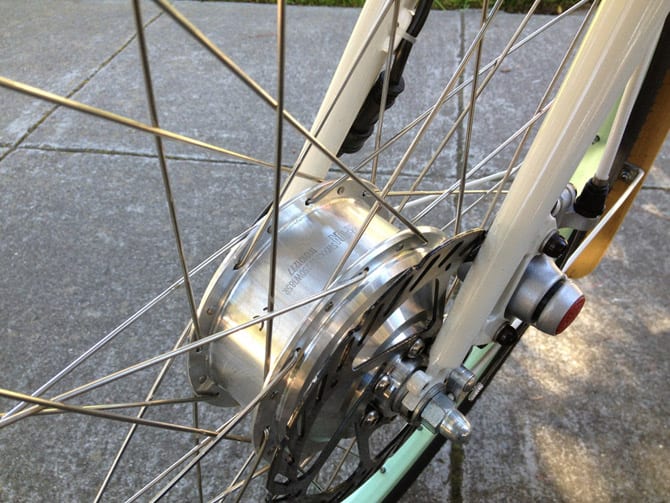
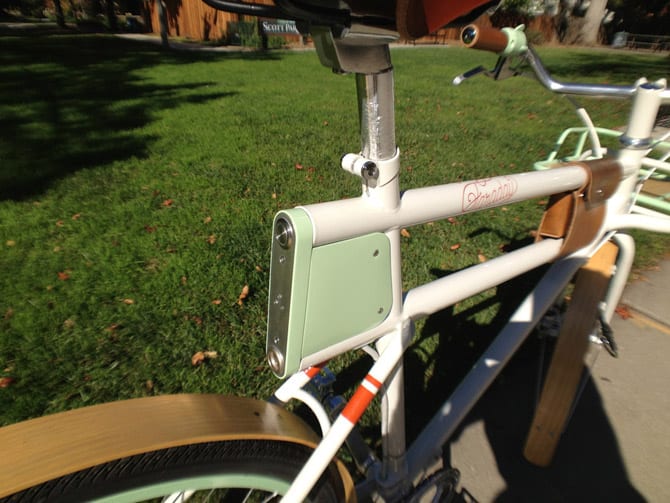

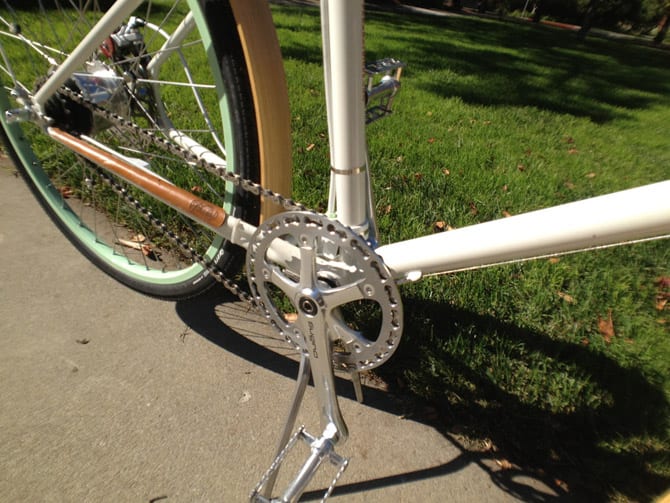

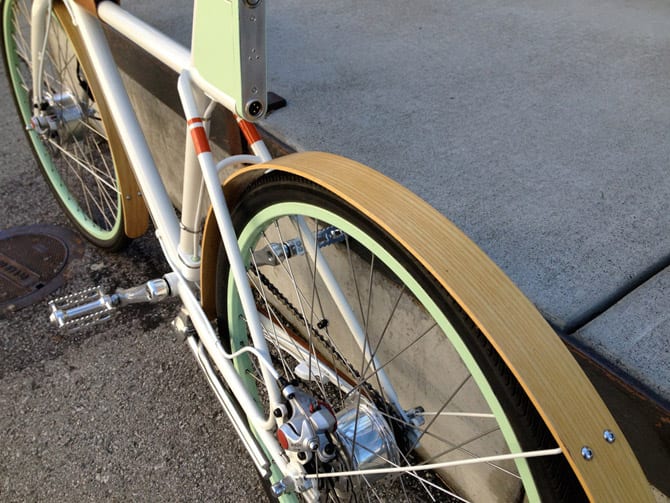
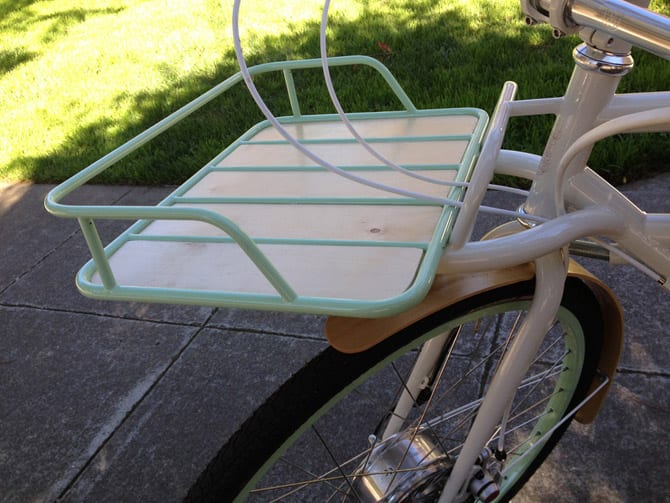
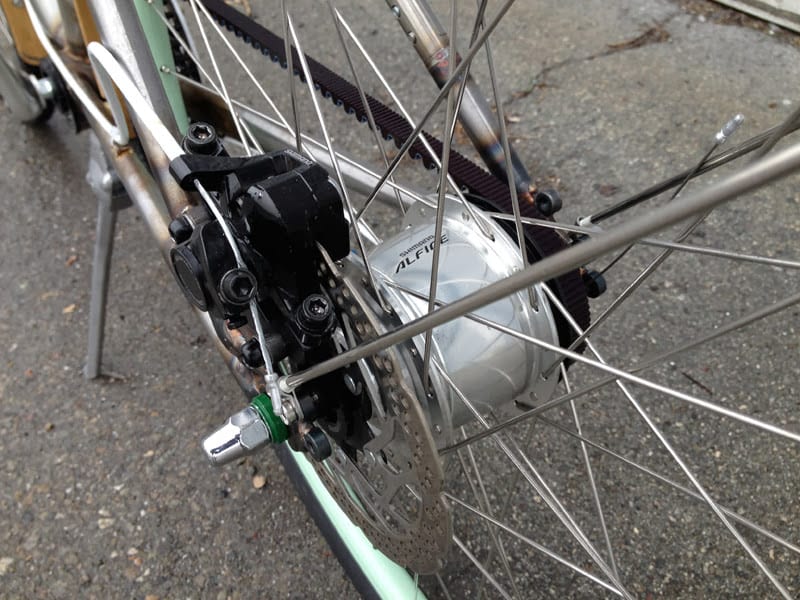

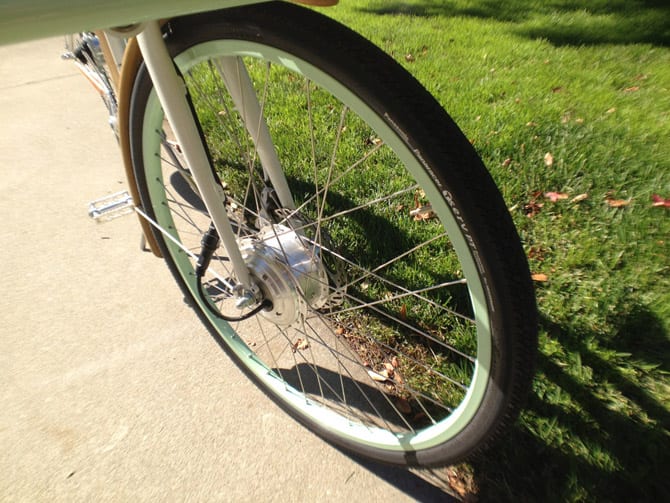
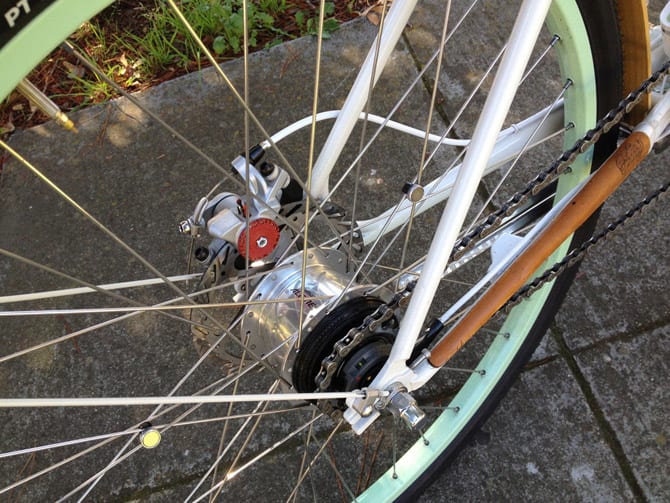

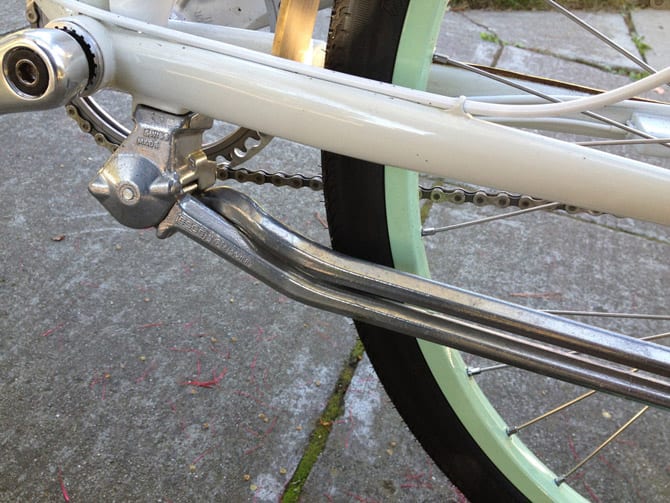
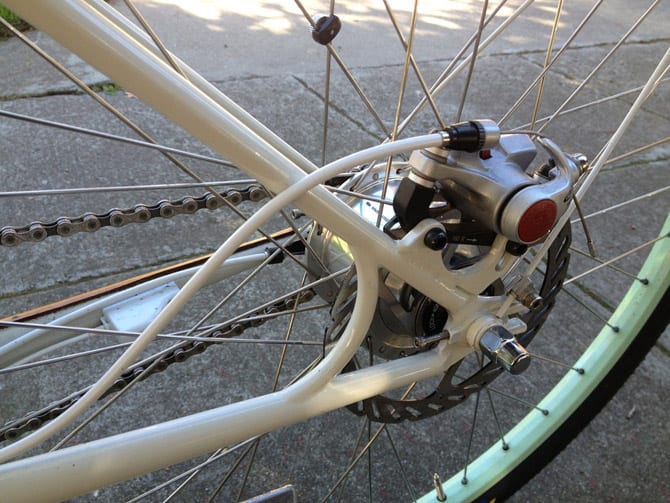
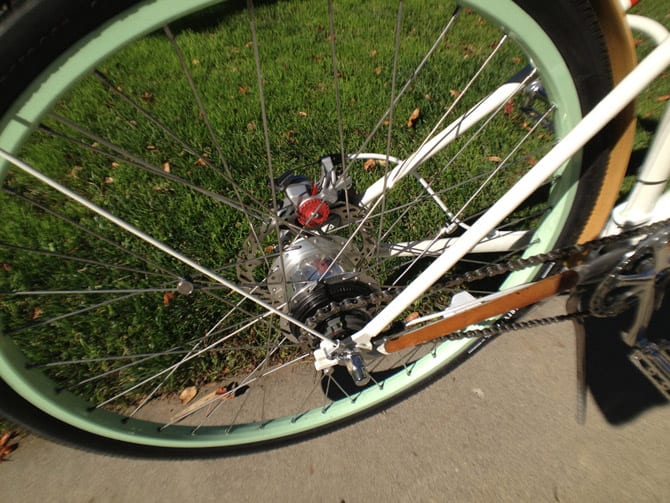
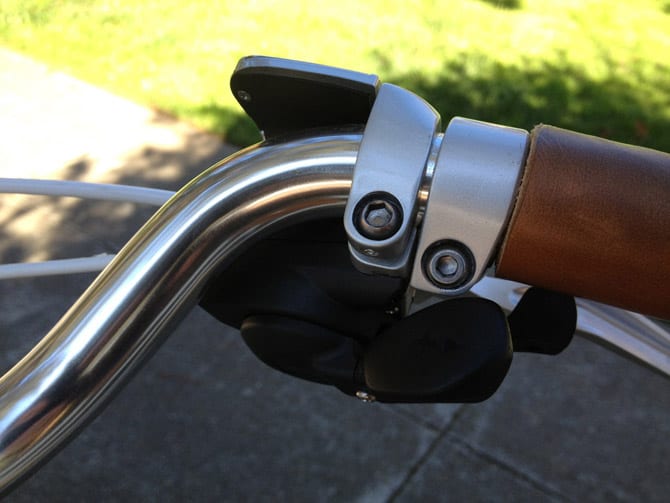
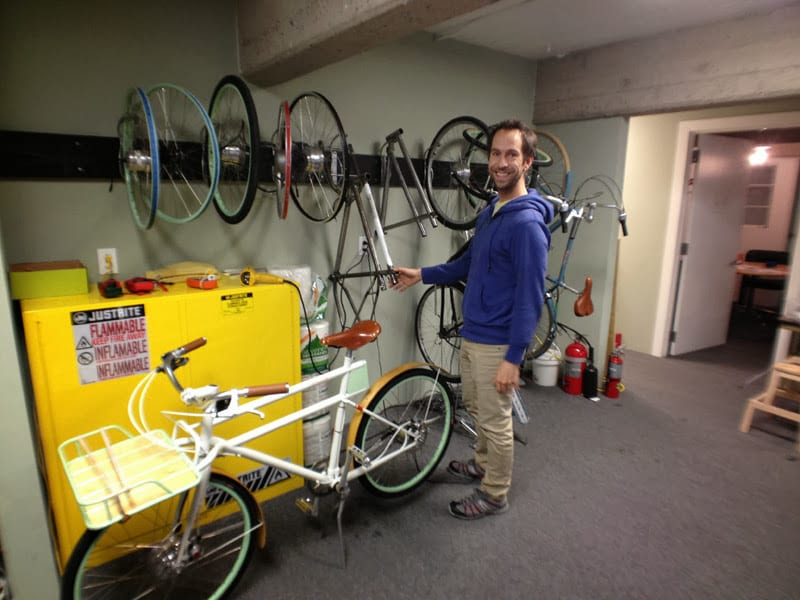
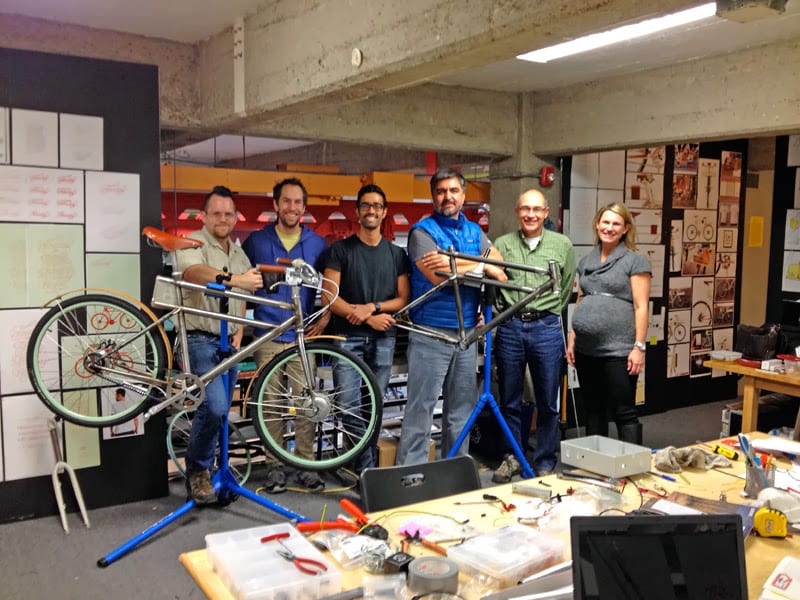

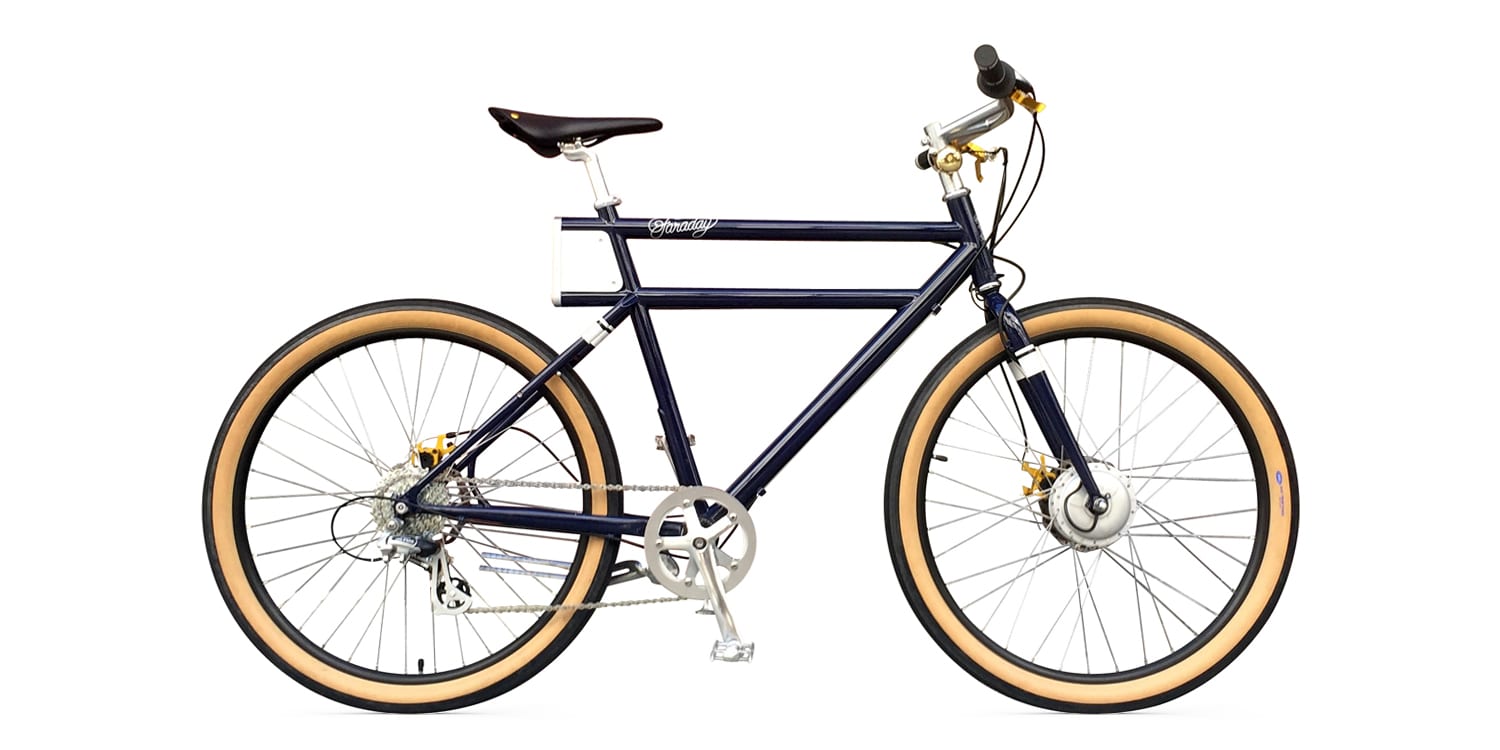
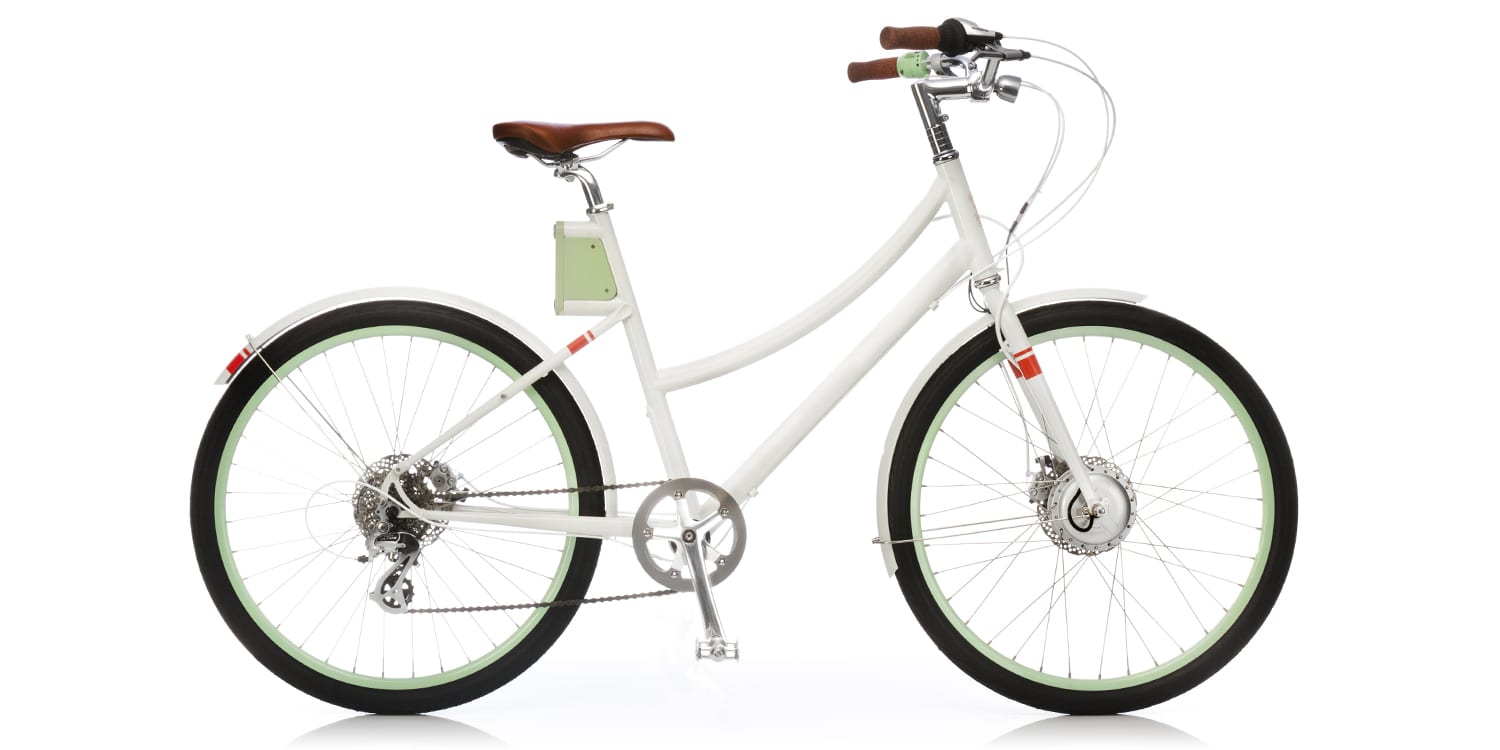
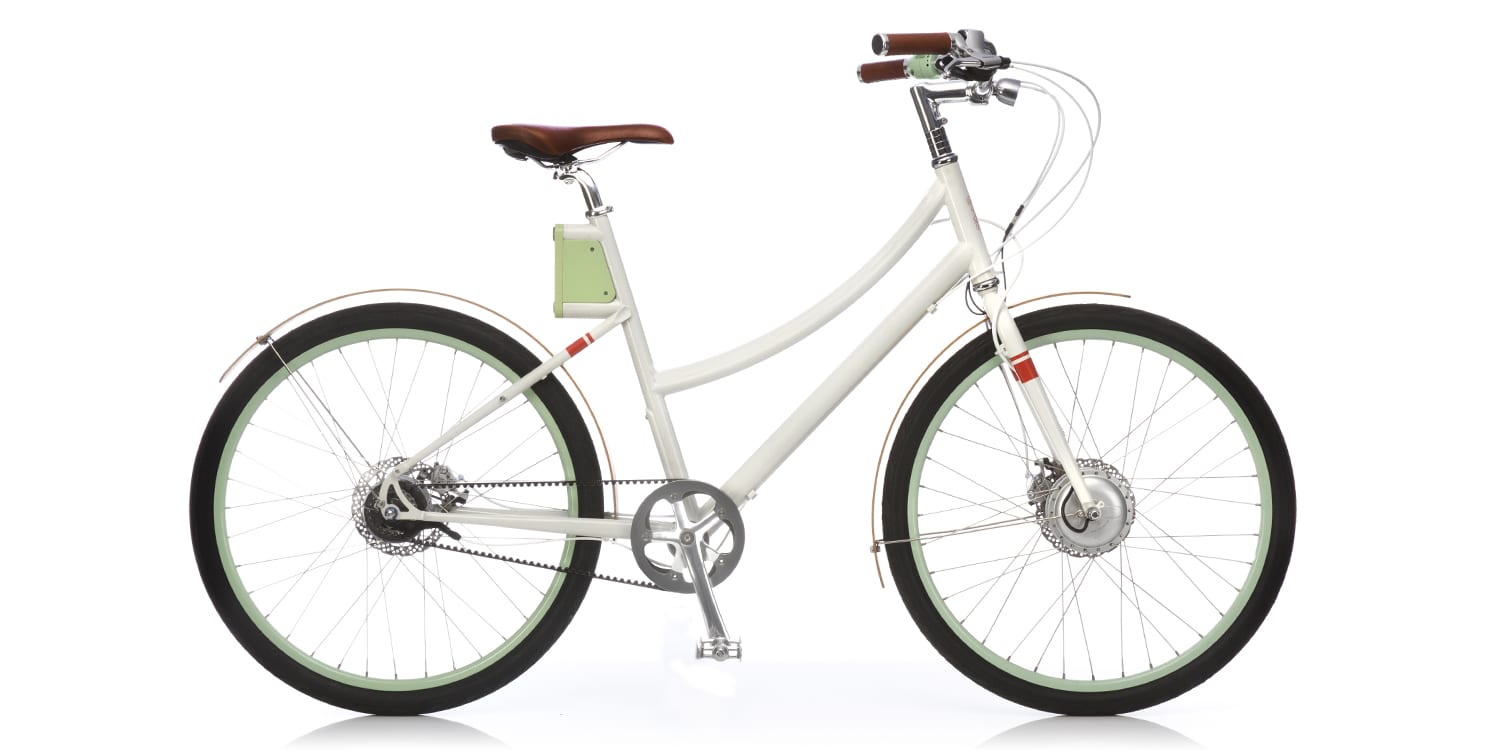
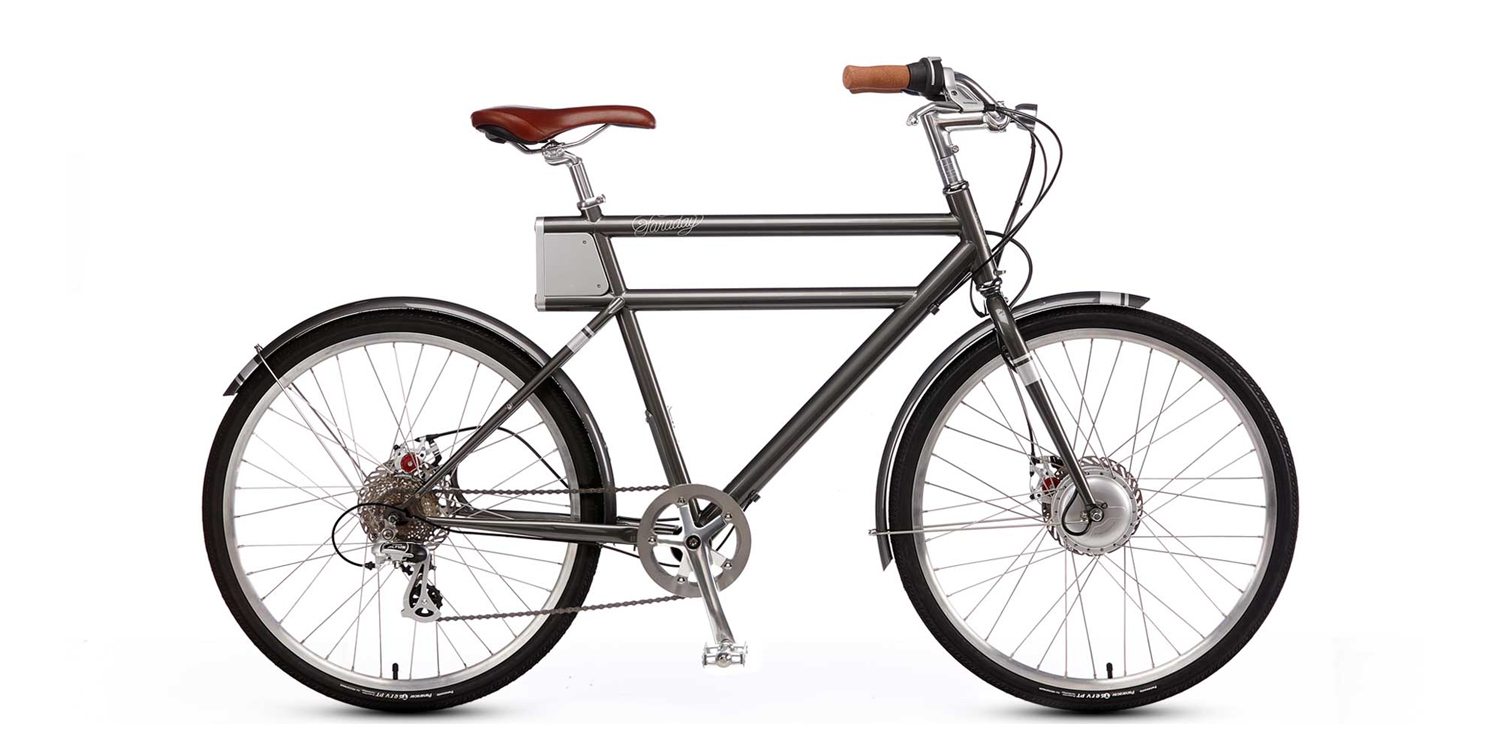
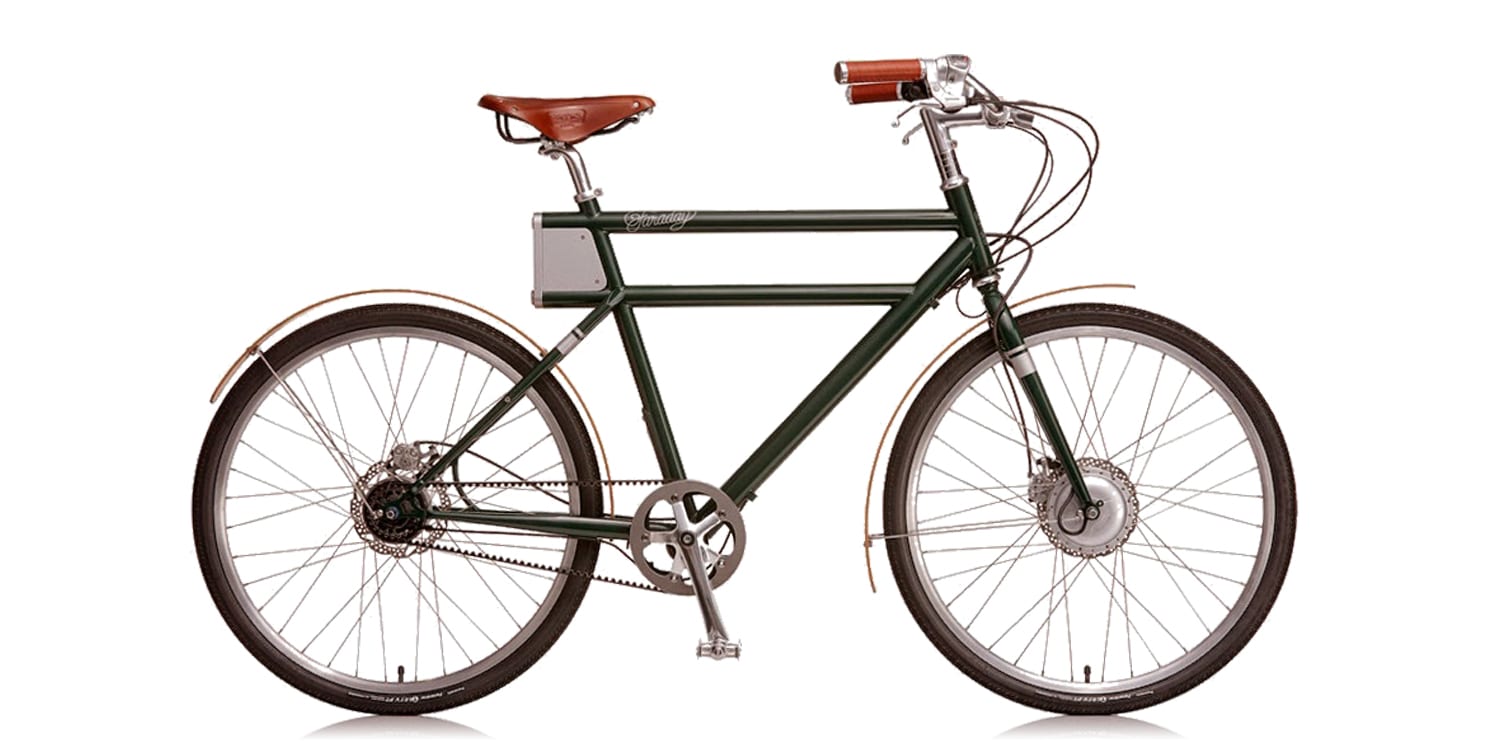
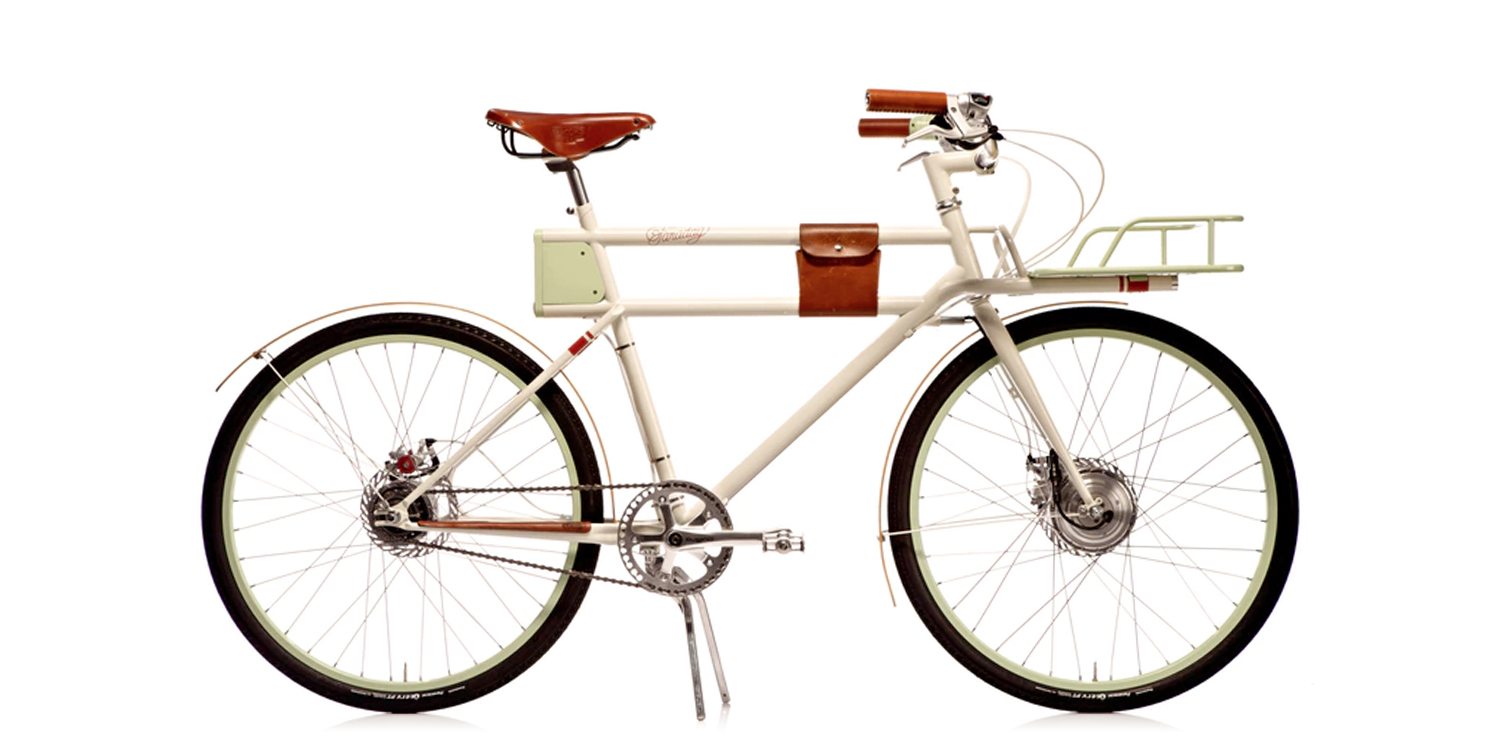
kirk says
Thanks for the great reviews. Could you clarify the motor size of the Faraday Porteur. On its blog, Faraday announced a while ago that they had upgraded the motor from 250 to 350 watts. You have both 250 and 350, but then state that it is 250. Thanks for the clarification.
Adam Vollmer says
Hi Kirk, this is Adam here, from Faraday. The Porteur has a nominal motor power of 250W, with a 350W peak. Peak power kicks in under heavy load (ie. hill climbing). Sorry for the confusion, our blog was a bit ambiguous – I’ve gone back and clarified it. Thanks for asking and please let us know if you have any additional questions about the Porteur! Happy riding.
maria says
It’s beautiful. Will you go back to fabrication in the US? I’d definitely be interested in this bike then.
Andy says
I would be interested in this bike if I could test ride it. Could be a great bike for my wife.
Court Rye says
Hi Andy! The folks at Faraday are very friendly and might be able to work something out with you on a trial period or something if you just reach out. I really love the Porteur… it’s quiet and light and beautiful! I bet your wife would love it if you were able to figure out the correct size and color that she’d like. I realize it probably feels like a big jump, I scored the bike high because it really performs well and their support is top of the line from what I’ve heard and seen. Good luck, feel free to chat about it more in the forums here if you want a second opinion.
Andy says
Court, I really appreciate your reviews, the forum and your website overall. I also greatly appreciate the tone you set. Thanks for everything! Best, Andy
John says
Very good review. Looks like a well engineered bike, very impressive.
Court Rye says
Thanks John! I feel like the people who created Faraday are authentic and I know they are hard working. They began on Kickstarter years ago when ebikes were still very new in the US and have refined their offering quite a bit since then. They are so custom and almost like art in they way they are accessorized.
Xavier Fernandez says
?? recommended max weight-load (rider + extras)
Court Rye says
Hi Xavier, I reached out to Faraday and received the following reply for you: The weight limit (rider+gear) is 275 lbs. for all of our Faraday models. Hope that helps and thanks for letting us know of the question! As always, let us know if any others come up, we’re happy to help.